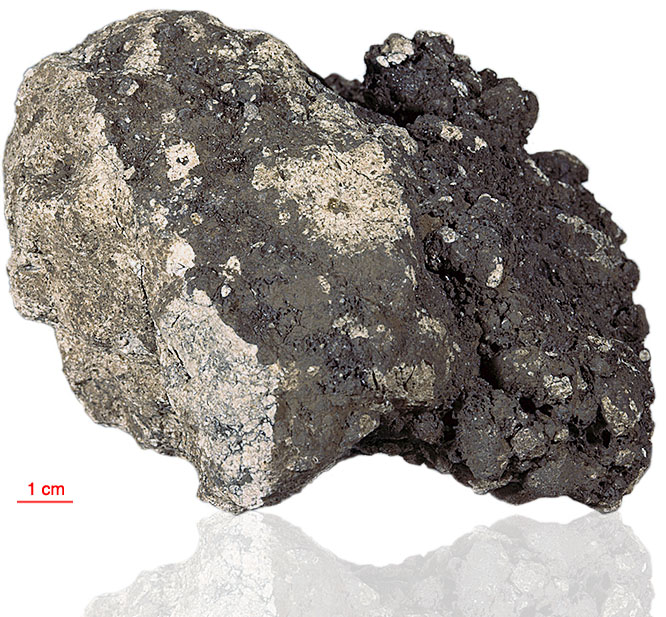
Fact sheet
77017 contains a large, annealed feldspathic breccia set in a frothy black glass matrix. The feldspathic portion is an annealed gabbroic rock that has been recognized as an impactite, because it contains a high concentration of meteoritic siderophile elements. Shock features indicate subsequent impact followed by the addition of black glass of mare composition. The feldspathic portion has been described as an olivine-bearing, anorthositic gabbro with a relatively coarse-grained poikilitic (or poikiloblastic) texture (rotation 1). There are also areas with relict lithic clasts of annealed troctolitic anorthosite and anorthosite. Mineral clasts of plagioclase, olivine, pink spinel and ilmenite are enclosed within pigeonite and augite oikocrysts.
Dating of the sample indicates that a major metamorphic event forming the feldspathic portion was at about 4 b.y., whereas the glass-forming event was about ~1.5 b.y.
The sample weighed 1730 grams before analysis.
Further details of this and other Apollo samples are here: http://curator.jsc.nasa.gov/lunar/
Apollo 17, the final manned landing mission, had two objectives: to obtain samples of ancient rocks from the lunar highlands and to look for evidence of younger volcanic activity on the valley floor.
This small Collection contains material deriving from both periods, including igneous rocks around 4.3 billion years old from the lunar highlands as well as younger volcanic samples dating from about 3.6 billion years ago.
Apollo 17 was launched on 7 December 1972.






